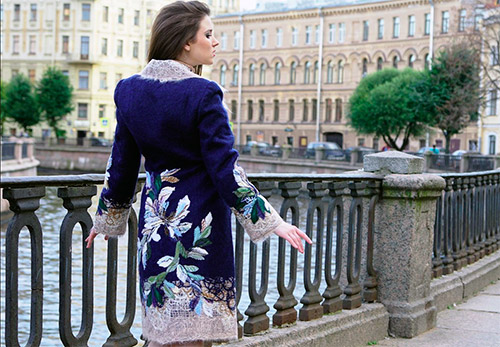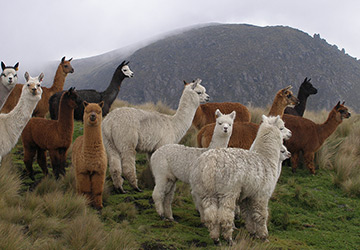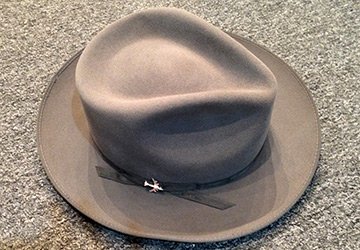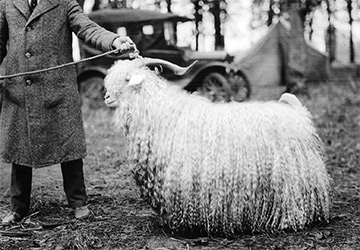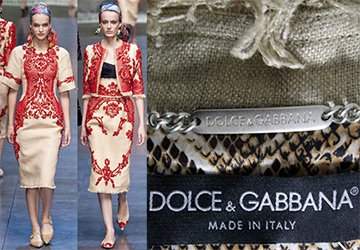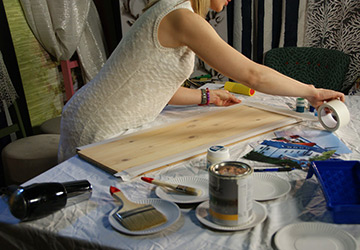NEEDLEWORK
Felting techniques from wool and other materials
Only natural materials are used in felting. These are 100% sheep wool, alpaca wool, mohair from wool of angora goats, as well as various natural fibers: fibers of Tussah silk, Mulberry silk, nettle, bamboo, flax, soy, banana fibers.
To decorate and give texture to products, neps and slaps are used - these are small multi-colored balls of wool. Neps are smaller, weak are larger and softer.
Wet felting creates amazing panel paintings, blankets, carpets, and of course, items of clothing, shoes, hats, various accessories (brooches, hairpins, jewelry), souvenirs.
By dry felting, using special needles with notches, you can make toys, decorative items, appliques, drawings, jewelry.
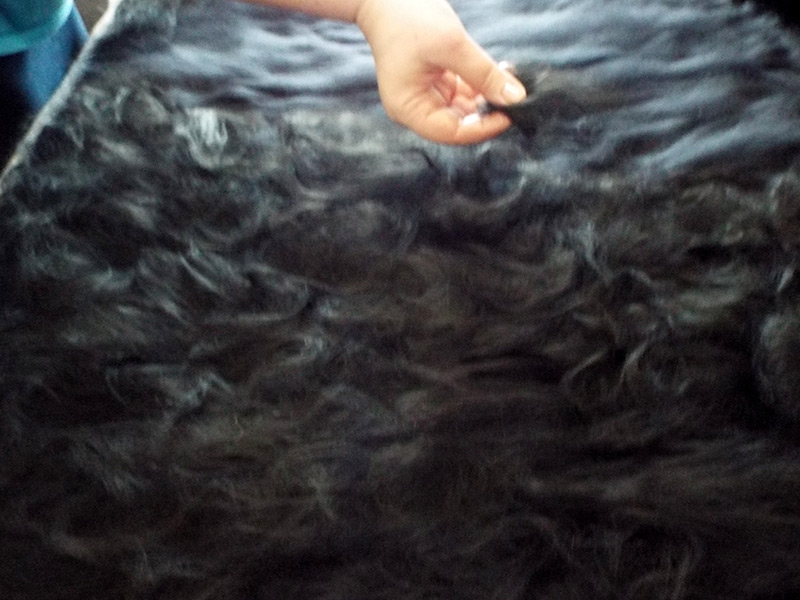
Each product is unique and very individual.
In technology "Nunovylok" or "Nunofelting" (Felting - translated from English - "felting", and Nuno in translation from Japanese - "fabric") wool fibers are pressed against the fabric. This technique was first introduced to the public in 1994 by Japanese designer Sachiko Kotako and Australian textile designer Polly Stirling.
This is a very fashionable, modern technique for creating unique and interesting things. Most often, fabrics such as silk, chiffon, organza, linen, sometimes satin are chosen as the basis, i.e. those fabrics that adhere very well to wool fibers.
"Woolen watercolor" - This is a technique for painting pictures with dry wool without a bulge. The wool is dyed in various colors. It is laid out in a pattern on a cardboard or hardboard substrate in the same way as we would draw with colored pencils or paints, only instead of them we use pieces of multi-colored wool. When the picture is ready, it is covered with glass and inserted into a frame. Using this technique, picturesque landscapes, still lifes, abstract paintings and even portraits are created.
Wool felting master class
I present photographs of the stage-by-stage production of the painting "Poppies" by wet felting. The finished painting has a size of 60x90 cm.
When making any wool product by wet felting, we always take into account that in the process of rolling it will decrease (shrink) by about 30-40%, therefore, our pattern or size of the picture when laid out has a size larger by the above percentage.
1. We spread the wool in two layers perpendicular to each other. The wool goes into the previous piece by almost half, so that there are no gaps and holes. Cover the top with a third layer: silk fibers. This will add shine and smoothness.
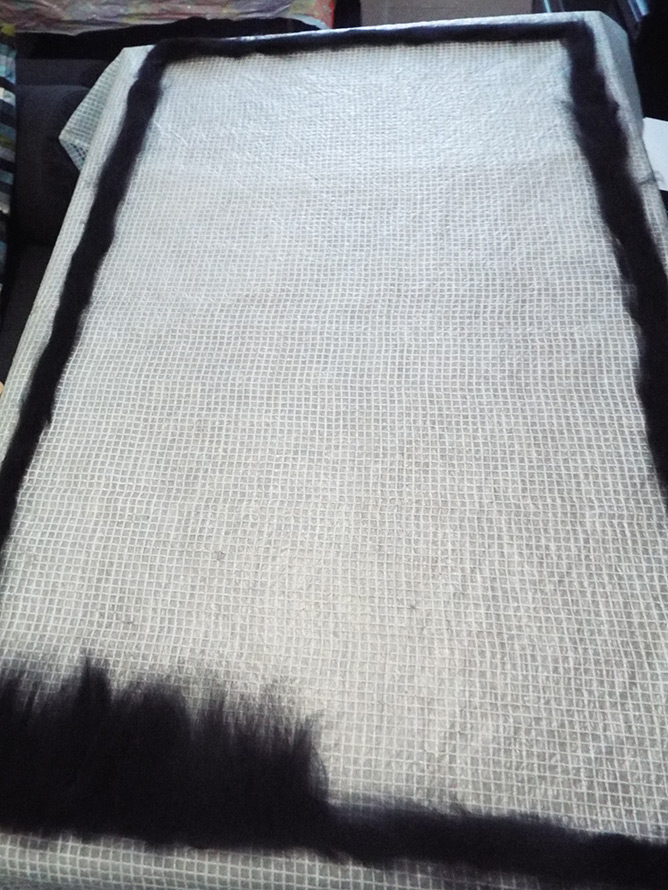
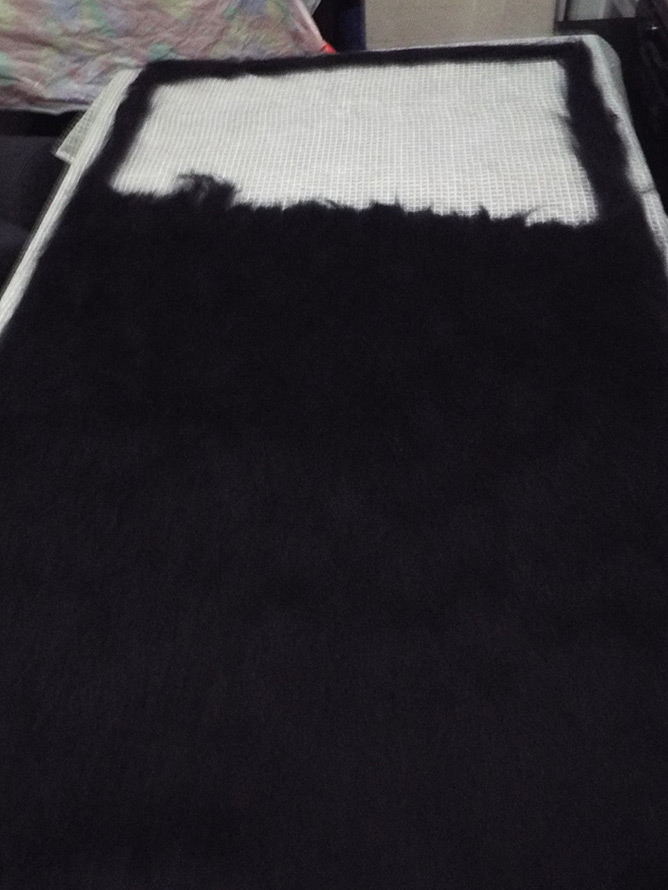
2. Prepare a soapy solution and sprinkle the layout, put a mesh on top (you can use a mosquito one) again pour abundantly with saturated soapy water, press it with your hands, smooth it very carefully so as not to dislodge the decomposed fibers.
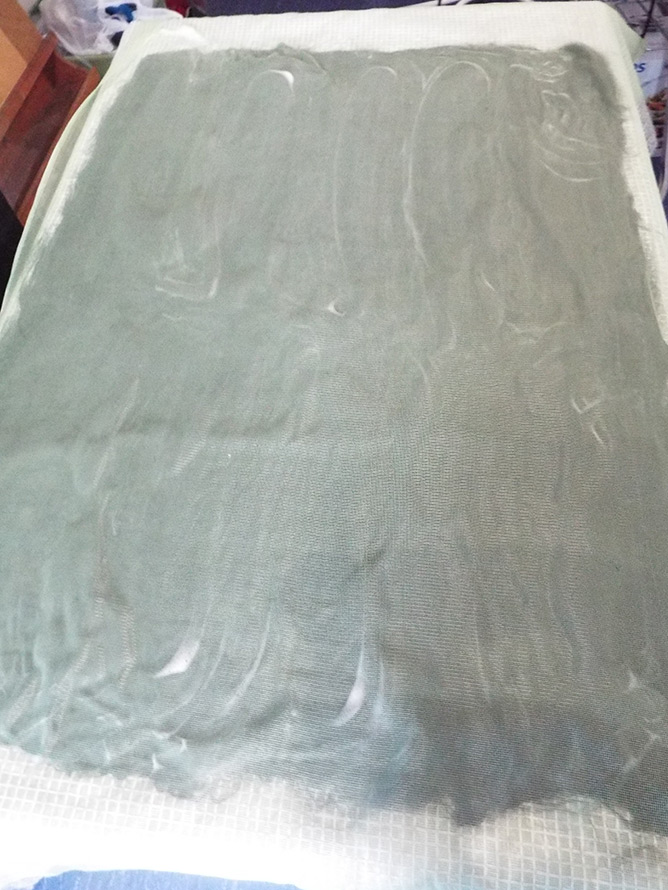
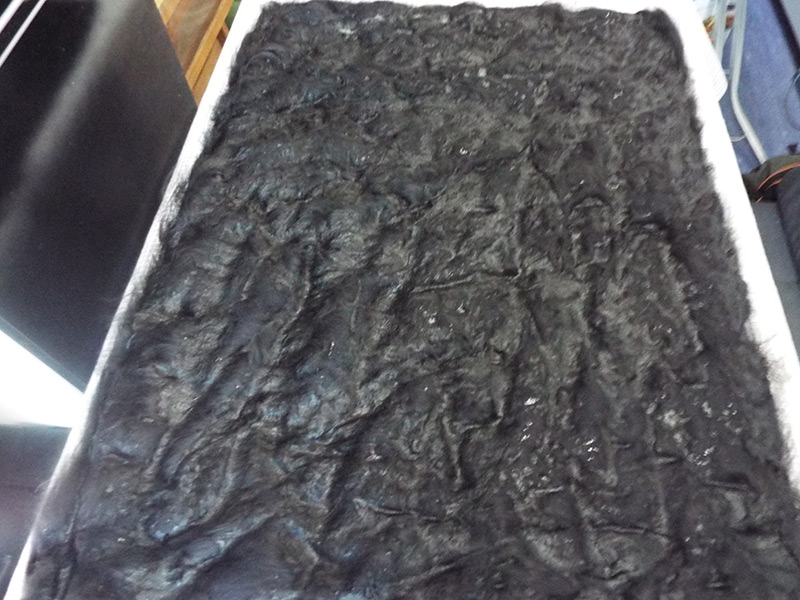
3. We leave the mesh and lay out the petals for future flowers on it. Here you can dream up. We take pieces of red wool, put lighter and darker shades on top, lay out the fibers of red and yellow silk (you can also use viscose fibers), they will also give shine and texture. We make the middle of the poppies. We also cover with a mesh, pour with soapy water, smooth it and transfer it to another place on the film.
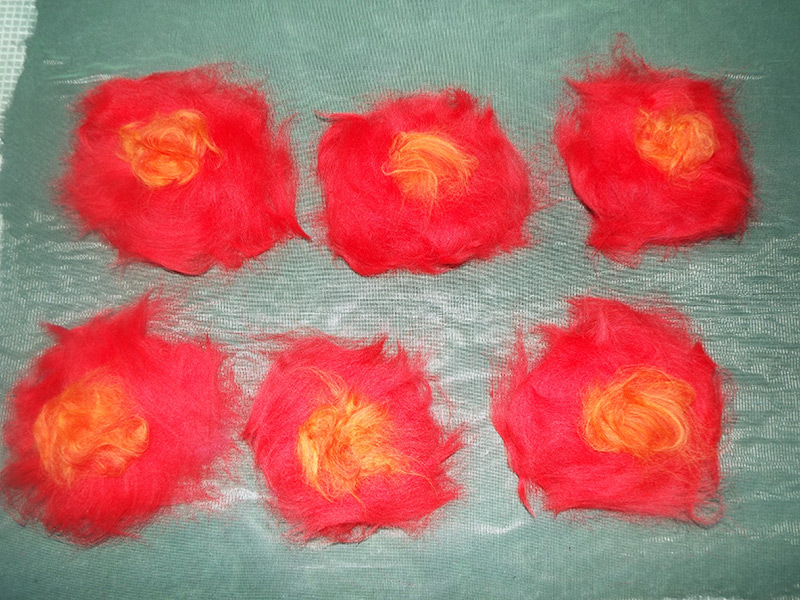
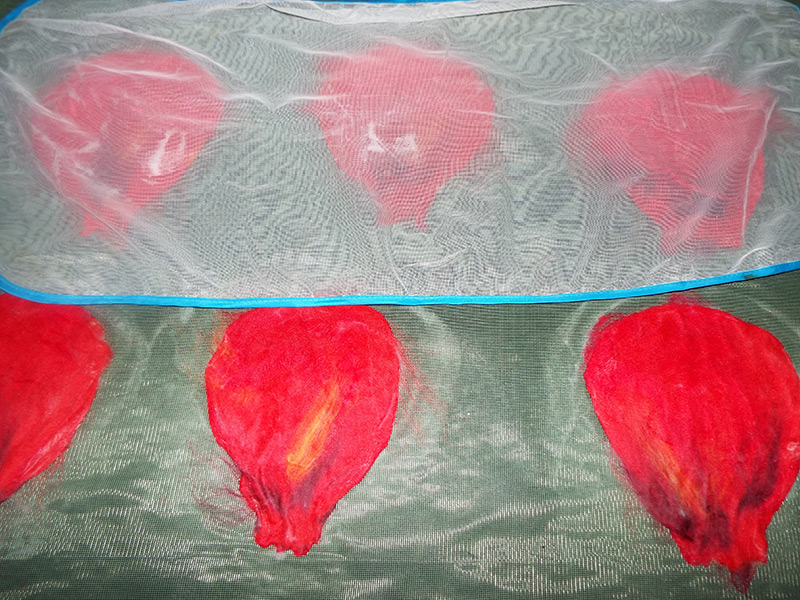
4. Remove the mesh from our laid out wool - the background, in this case, black. We begin to paint with shades of green wool - stems, grass, buds. Again we apply the mesh and press, smooth. Removing the mesh.
5. We spread the flower petals. It can be an open or closed flower, as you have conceived. We cover with a net, sprinkle with soapy water and begin to grind.At first not very much, then more intensely.
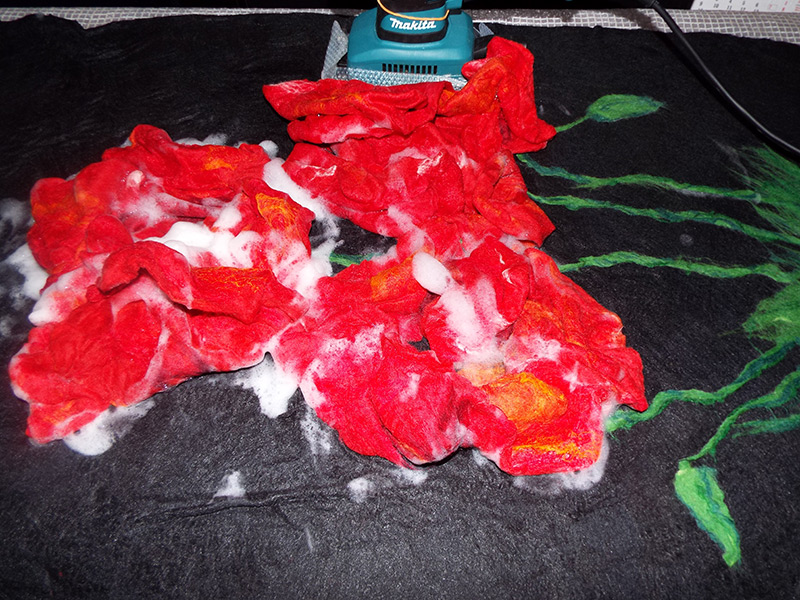
6. We remove the mesh and begin to roll away with the help of a vibrating grinder, covered with a bubble wrap for safety. If the last layer when laying out the background was horizontal, then set the typewriter perpendicularly so as not to knock down the layers of wool and silk.
7. Then we start to play by hand. Since I would like to see the poppy petals not completely leaned against the background, there is no need to roll up the places where they leave, that is, we raise the petals in the right places, and rub the petals themselves and grind them off.
8. In the process of felting, we see how our canvas becomes covered with pimples, rolls off and becomes smaller. The fibers adhered well to each other. We roll to the size we need.
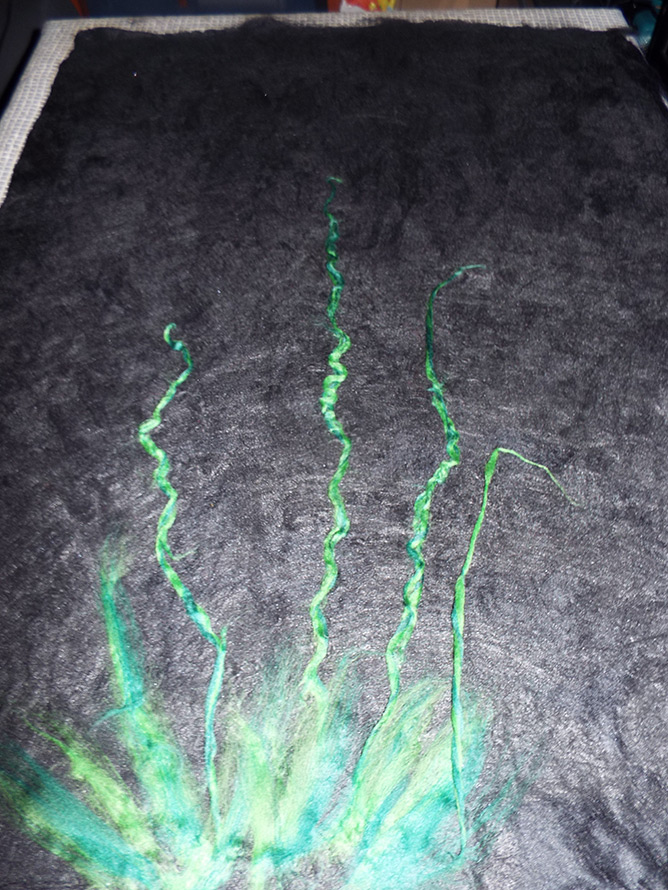
9. We rinse in warm and then in cool water. Shaping the flowers. Leave to dry.
10. Iron, glue on the backing, insert into the frame. The picture-panel "Poppies" is ready.
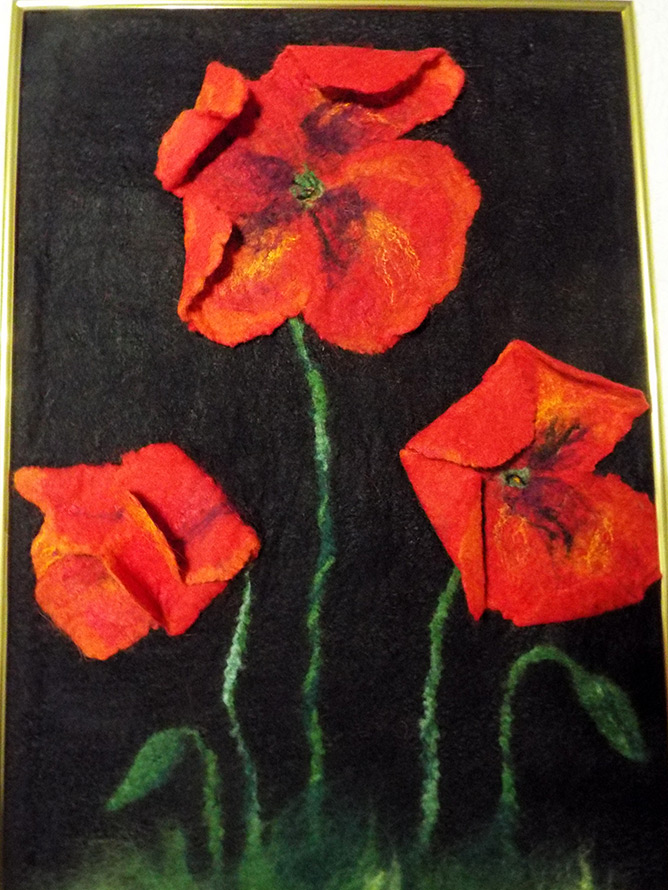
about the author
Kopneva Svetlana Viktorovna. Born on August 26 in Moscow. Married. Has five sons. He is a member of the Regional Public Organization "Association of Large Families" in Moscow.
Graduated from Moscow Art School No. 7. Received two higher educations.
Last: Moscow Institute of Design and Graphics, specializing in interior designer.
Since 2006, a member of the Creative Union of Artists of Russia. The priority direction in the work of the artist-designer is the creation of paintings, garments, accessories and souvenirs from natural wool using the techniques "Felting", "Woolen watercolors", "Nuno-felt".
Takes part in exhibitions, including in the Kremlin Palace of Congresses, as part of the Moscow Family Territory of Opportunities festival.
Participates in exhibitions of decorative and applied arts, as well as in fairs of environmentally friendly products, including: International Eco - Festival "I live" September 12, 2024 in the recreation complex Zavidovo Head of the UPDK at the Ministry of Foreign Affairs of Russia, the exhibition "Summer Patterns" in the Leisure Center and creativity Zelenograd.
The artist conducts master classes on "Woolen watercolors" and "Felting from wool". For children and adults with disabilities conducts charity master classes in social and leisure centers, only in 2024: in the Center for Social Assistance to Families and Children "Izmailovo", RODYUO "Education, Sports, Rehabilitation" Family Club "Patoka", Rehabilitation Center " Inspiration ”, Center for Social Assistance to Family and Children“ Dialogue ”.
Collaborates with the Believe in a Dream and Life is Happiness Charitable Foundations. Participates in charity auctions. Has gratitude and diplomas from the Directorates of Social Protection of the Population of Moscow, as well as from the Minister of the Government of Moscow, Head of the Department of Social Protection of the Population of Moscow V.A. Petrosyan.
Comments and Reviews
Add a comment
Rating news
Shades of clothing that make women look younger
What shades of hair make women younger: rules and photos
Funny wedding dresses - photos and ideas
12 most expensive down jackets for the winter
How to look 25 at 40: tips from supermodels
Beautiful schoolgirls
Anti-aging haircuts and hairstyles for women
Fashionable skirts for autumn and winter
Fashionable women's trousers for the cold season
Fashionable and stylish sandals for summer 2024
Spring-summer 2024
 Fashionable dresses and tops with thin spaghetti straps
Fashionable dresses and tops with thin spaghetti straps
 Bandana tops: how to wear stylishly and beautifully
Bandana tops: how to wear stylishly and beautifully
 How to put together the perfect men's wardrobe for the summer
How to put together the perfect men's wardrobe for the summer
 Fashionable shorts for spring-summer 2024
Fashionable shorts for spring-summer 2024
 Fashionable skirts for spring-summer 2024: a guide to online shopping
Fashionable skirts for spring-summer 2024: a guide to online shopping
 The most fashionable dresses spring-summer 2024: styles and colors
The most fashionable dresses spring-summer 2024: styles and colors
 Fashionable total look 2024: ideas of images and trends
Fashionable total look 2024: ideas of images and trends
